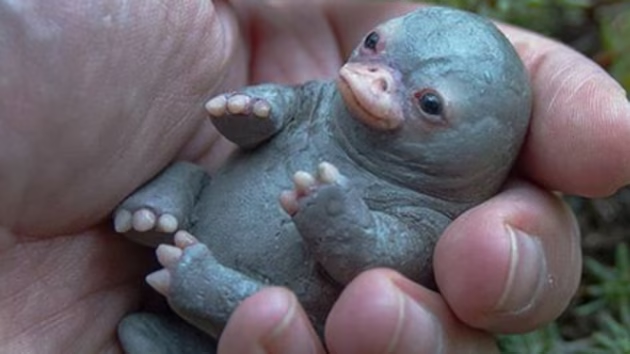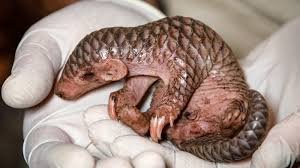
blue parakeet
Parakeets, also known as budgerigars or budgies, are one of the most popular pet birds around the world. Known for their small size, cheerful disposition, and vibrant feathers, parakeets are especially beloved for the wide variety of colors they come in. Among these, the blue parakeet is a standout favorite. With its cool, calming hues and lively personality, the blue parakeet is an ideal companion for both first-time and experienced bird owners. But what makes the blue parakeet special? In this article, we’ll explore everything you need to know—from its origin and appearance to care, behavior, and breeding.
Origin and History of the Blue Parakeet
The original wild budgerigar hails from the open grasslands and woodlands of Australia, where it has existed for thousands of years. These wild parakeets are typically green and yellow in coloration, which helps them camouflage in their natural habitat. The blue variety is not found in the wild but rather developed through selective breeding in captivity. The blue color is the result of a genetic mutation that suppresses yellow pigment, leaving only the blue tones in the feathers. This mutation has been carefully maintained by breeders since it first appeared in the early 20th century, and today, blue parakeets are one of the most common color morphs available in pet stores and aviaries around the world.
Physical Characteristics
Blue parakeets are known for their striking appearance. They typically have a sky-blue to cobalt-blue body, with black barring on the wings and back, and a white or light-gray face. Their eyes are dark with a white iris ring, and the beak is a curved pale yellow to orange, depending on age and diet. Like all budgies, they have two toes facing forward and two backward, which help them grip perches and climb easily. Adult blue parakeets usually reach a length of about 7 inches (18 cm) and weigh around 1 ounce (28 grams). Males and females look quite similar, but you can often tell them apart by their cere (the fleshy area above the beak)—blue in males and light brown or beige in females, especially during breeding season.
Types of Blue Parakeets
There are several shades and subtypes within the blue parakeet category, depending on breeding lines. The main varieties include:
- Sky Blue: The lightest and most common shade, resembling the color of a clear sky
- Cobalt Blue: A deeper, richer blue with strong contrast
- Mauve: A bluish-gray variation, often appearing slightly purplish
- White-faced Blue: Lacks yellow entirely, giving the bird a crisp blue-and-white appearance
Each variety has the same overall body structure but offers a unique aesthetic that appeals to different bird enthusiasts.
Personality and Behavior
One of the best things about blue parakeets—and budgies in general—is their friendly, social nature. These birds are extremely curious and playful, often exploring their surroundings, toys, and even their human caretakers. Blue parakeets thrive on social interaction, and they can form strong bonds with their owners when properly handled and trained. They enjoy perching on fingers, shoulders, and even climbing into shirt pockets. Parakeets are intelligent and can learn tricks, recognize voices, and even mimic words and sounds. Although not as articulate as larger parrots, some blue parakeets can develop a small vocabulary of phrases with regular repetition and positive reinforcement.
Cage and Habitat Requirements
Providing a proper home for your blue parakeet is essential for its health and happiness. The cage should be spacious enough to allow for wing-flapping and limited flight. A good size for a single bird is at least 18 x 18 x 24 inches, though larger is always better. The cage should have horizontal bars for climbing and multiple perches of varying sizes and textures to prevent foot fatigue. Avoid plastic perches as they can cause sores over time. Instead, use natural wood or rope perches. Blue parakeets also need toys for mental stimulation, such as bells, swings, mirrors, and chewable items. Place the cage in a well-lit, draft-free area of your home, ideally where they can interact with you regularly. Avoid placing the cage in the kitchen or near fumes, as birds have very sensitive respiratory systems.
Diet and Nutrition
Feeding your blue parakeet a balanced diet is crucial for maintaining its vibrant feathers, energy levels, and long-term health. A typical diet should include:
- High-quality seed mix or pellets: Formulated specifically for budgerigars
- Fresh vegetables: Such as carrots, spinach, kale, broccoli, and bell peppers
- Fruits in moderation: Apples, bananas, berries, and mango (avoid avocado and citrus)
- Clean water: Must be provided daily
- Cuttlefish bone or mineral block: For calcium and beak conditioning
Avoid feeding your parakeet human junk food, chocolate, alcohol, caffeine, or anything greasy or salty. These can be toxic to birds. Variety is key, and introducing new foods gradually can help prevent picky eating habits.
Health and Lifespan
When well cared for, a blue parakeet can live anywhere from 8 to 15 years in captivity, although some have been known to live even longer. Common health concerns include respiratory infections, mites, feather plucking, and vitamin deficiencies. You can help prevent illness by keeping the cage clean, feeding a proper diet, and avoiding sudden temperature changes. Regular avian vet checkups are recommended, at least once a year. Watch for signs of illness such as fluffed-up feathers, lethargy, changes in droppings, sneezing, or loss of appetite. Early detection can make a big difference in treatment success. If you’re unfamiliar with signs of avian illness, this Vetstreet guide can help you identify red flags early.
Social Needs and Companionship
Blue parakeets are extremely social birds and do not enjoy long periods of solitude. If you cannot spend a lot of time interacting with your bird daily, it’s a good idea to consider getting a second parakeet. However, introducing a new bird must be done carefully, using a quarantine period and gradual socialization to prevent aggression or disease transmission. When kept in pairs or groups, parakeets will often preen each other, chirp, and engage in playful behavior. If you have only one bird, spend at least an hour a day talking, playing, or training them. Interactive play keeps them from becoming bored or depressed, which can lead to destructive habits like feather plucking or screaming.
Breeding Blue Parakeets
Breeding parakeets should be left to responsible and knowledgeable bird keepers, as it requires time, resources, and care. Blue parakeets can breed when they are around 1 year old, though females must be monitored closely during the process. A proper nesting box, high-protein diet, and quiet, low-stress environment are essential for successful breeding. The female typically lays 4 to 6 eggs, which hatch in about 18 days. Chicks are blind and featherless at birth, requiring warmth and food from the parents. If you’re serious about breeding, it’s critical to understand genetics, as color outcomes vary. A blue parakeet mated with another blue may produce different shades, depending on underlying recessive genes. For more information on parakeet genetics, The Spruce Pets offers an excellent overview of how color mutations work.
Training and Enrichment
Blue parakeets are highly trainable, especially when young. The key is consistency, patience, and positive reinforcement. Training sessions should be short—about 10 to 15 minutes—and occur daily. Begin by hand-taming the bird, letting it get used to your presence and voice. Offer treats and slowly introduce your hand into the cage. Once the bird is comfortable, you can train it to step up, fly to you, or even say simple words. Clicker training and treat-based rewards work well with budgies. Providing daily enrichment through new toys, varied perches, and environmental stimulation is also vital for mental well-being.
Final Thoughts
The blue parakeet is more than just a pretty pet—it’s a charming, intelligent, and affectionate bird that brings color and joy into any home. From its unique genetics and dazzling appearance to its playful nature and vocal talents, the blue parakeet has earned its place as one of the most beloved avian companions. With proper care, socialization, and attention to health, these birds can live long, happy lives as part of your family. Whether you’re a first-time bird owner or an experienced avian enthusiast, the blue parakeet offers a perfect blend of beauty, personality, and companionship.






